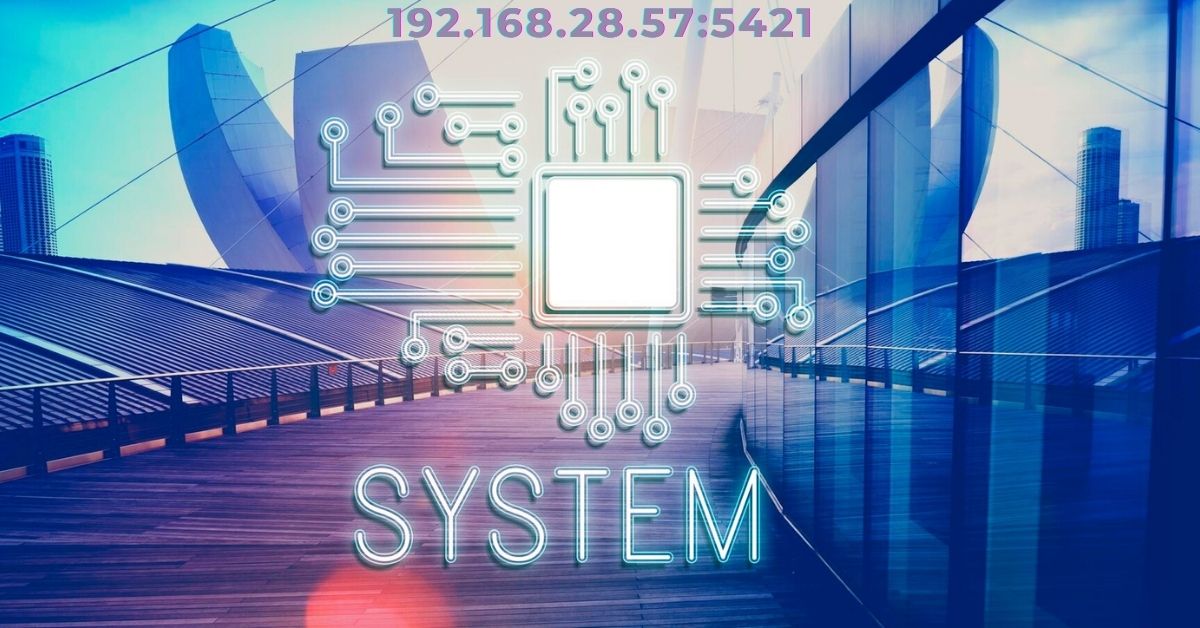EDUCATION
St. George’s Episcopal Church Brooklyn: A Look Into Its History and Pastor Foster’s Impact

St george’s episcopal church brooklyn paster fosterr is not just a house of worship but a significant part of the community, offering spiritual guidance, outreach, and a sense of belonging to its parishioners. Over the years, one pastor who has significantly shaped the church’s direction and outreach is Pastor Foster. This article delves into the history of St. George’s Episcopal Church, Pastor Foster’s leadership, and how his vision is transforming the community.
1. The Rich History of St. George’s Episcopal Church
St george’s episcopal church brooklyn paster fosterr was founded in the early 19th century, establishing itself as a beacon of faith in Brooklyn. Originally built to serve the growing population in the area, the church has since expanded both physically and spiritually. Understanding its roots gives a sense of the profound impact it has had on Brooklyn’s development.
The church’s architecture reflects its long history. From its towering steeples to the intricate stained-glass windows, St. George’s offers more than just a place for worship but a piece of history that invites admiration. It stands as a testament to the craftsmanship of its time.
2. The Role of St. George’s in the Community
St. George’s is more than a church; it is a community center. From outreach programs to social events, the church provides a safe and welcoming space for all. Whether it’s hosting educational initiatives or offering meals to those in need, the church plays an integral role in Brooklyn’s social fabric.
The church has been committed to helping the less fortunate. Through various ministries, such as food drives and homeless outreach, St. George’s has made a significant difference in the lives of many in the surrounding neighborhoods.
3. Pastor Foster: A Visionary Leader
Pastor Foster has become a central figure in the life of St. George’s Episcopal Church. His leadership style combines deep spiritual insight with a practical approach to church management, making him beloved by his congregation. Pastor Foster’s background in theology and pastoral care makes him well-equipped to lead such a historic congregation.
Under Pastor Foster’s guidance, St. George’s has expanded its outreach efforts, incorporated modern technologies into its services, and built a stronger sense of community. His leadership goes beyond Sunday services; it is about making the church a vibrant, living part of the community’s daily life.
4. Changes Under Pastor Foster’s Leadership
One of the significant changes Pastor Foster introduced was revitalizing the church’s programs. This included not only enhancing traditional church services but also creating more avenues for engagement through youth groups, adult education, and community events.
With a keen eye for progress, Pastor Foster has embraced technology to ensure the church remains relevant in the modern age. From live-streaming services to creating a digital space for prayer requests, the church’s technological advancements have allowed it to reach a global audience.
5. St. George’s Role in Interfaith and Social Justice Movements
Pastor Foster has led the church in fostering strong interfaith relationships. By opening the doors of St. George’s to other religious communities, the church has become a symbol of unity and understanding in a diverse Brooklyn.
St. George’s has been at the forefront of various social justice movements in Brooklyn. Pastor Foster’s commitment to equality, fairness, and peace has influenced the church to take an active role in advocating for marginalized communities, ensuring that St. George’s is a voice for the voiceless.
6. The Impact of Pastor Foster on the Congregation
Pastor Foster is known for his personal approach to ministry. He takes the time to understand the individual needs of his congregation, offering tailored spiritual guidance. His open-door policy ensures that everyone feels heard and valued.
Under Pastor Foster’s leadership, St. George’s has become more than just a church. It is a place where friendships are formed, personal growth is encouraged, and faith is nurtured. Pastor Foster emphasizes community-building as one of the cornerstones of the church’s mission.
7. What’s Next for St. George’s Episcopal Church?
St. George’s Episcopal Church is poised for continued growth, both spiritually and in its service to the Brooklyn community. Pastor Foster’s vision for the church is not one of stagnation, but of forward momentum.
The future of St. George’s lies in further expansion of its outreach efforts. Pastor Foster has big plans for increasing the church’s involvement in local and global causes. Expect more international missions, intergenerational programs, and an even more integrated digital presence.
Conclusion
St. George’s Episcopal Church in Brooklyn holds a deep and rich history that continues to thrive today, thanks to the dedicated leadership of Pastor Foster. His innovative approach to ministry, coupled with his commitment to social justice and community engagement, has ensured the church remains relevant and impactful. Whether through its rich traditions or its progressive embrace of modern technologies, St. George’s Episcopal Church will undoubtedly continue to play a pivotal role in Brooklyn for years to come.
FAQs
1. What makes Pastor Foster’s leadership at St. George’s Episcopal Church unique?
Pastor Foster’s leadership is characterized by a personal, approachable style that combines deep theological knowledge with practical action in the community. His focus on spiritual growth and social justice makes him stand out.
2. How has St. George’s Episcopal Church influenced Brooklyn’s community?
The church has been deeply involved in community outreach, providing support for those in need, hosting educational events, and fostering interfaith dialogue.
3. What programs does St. George’s offer?
St. George’s offers a wide range of programs including youth and adult education, community outreach, food drives, and interfaith events, all aimed at engaging and supporting the local community.
4. How has Pastor Foster embraced technology in the church?
Pastor Foster has introduced live-streamed services, digital prayer requests, and an online community presence, allowing the church to reach a broader audience and remain relevant in a digital age.
5. What does the future hold for St. George’s Episcopal Church?
The church plans to continue expanding its outreach programs, foster more community involvement, and take on new global missions to help those in need.
READ MORE: CLICK HERE
EDUCATION
Understanding the IP Address 192.168.28.57:5421: A Complete Guide

In the vast world of networking, understanding IP addresses is crucial for anyone working with computers or managing network systems. One such IP address that often appears in local networks is 192.168.28.57:5421. In this article, we will break down what this IP address signifies, how it’s used, and what the port number 5421 represents. We’ll also look at the potential security concerns and troubleshooting steps that come with using such an address.
Before we dive into the specifics of 192.168.28.57:5421, let’s take a moment to understand what an IP address is and how it functions. An IP address (Internet Protocol address) is a unique identifier assigned to devices on a network. This identifier allows devices to communicate with each other.
IP addresses come in two main types:
- IPv4 (Internet Protocol version 4), which consists of four groups of numbers separated by periods (e.g., 192.168.28.57).
- IPv6 (Internet Protocol version 6), which uses a longer string of alphanumeric characters.
What Does the IP Address 192.168.28.57 Represent?
The IP address 192.168.28.57 falls within the private IP range, specifically designed for local networks. These addresses are not directly accessible from the internet, which means they are used within local area networks (LANs), like those in homes or businesses.
Local vs. Public IP Address
- Private IP Address: The 192.168.x.x range, which includes 192.168.28.57, is reserved for private networks. These addresses are not routable on the internet.
- Public IP Address: In contrast, public IP addresses are used to identify devices on the internet, like when you access websites or use services online.
Understanding the Subnet Mask
In a private network, devices are often grouped into different subnets for better organization and management. The subnet mask (usually something like 255.255.255.0) helps devices determine which other addresses belong to the same network. In the case of 192.168.28.57, it indicates a device that’s part of a local network, and its subnet mask would typically help it connect with other devices in the 192.168.28.x range.
What is Port 5421?
Now, let’s talk about port 5421, which is part of the IP address structure. When you see an IP address followed by a colon and a number (e.g., 192.168.28.57:5421), the number after the colon is the port number.
What Is a Port Number in Networking?
A port number in networking refers to a specific channel or gateway through which network data is sent or received. Each service or application running on a device can use a different port number to communicate over the network.
The Role of Port 5421
Port 5421 isn’t assigned to any specific, widely recognized service like HTTP (port 80) or HTTPS (port 443). Instead, it’s often used by custom applications or services. This means that the port can be used for various purposes, like device communication or remote access, depending on the network setup.
Common Uses of 192.168.28.57:5421
Private Networks and Remote Access
For example, in a private network, 192.168.28.57:5421 could be the address of a remote access server or an IoT (Internet of Things) device that needs to communicate with other devices within the network. Many companies use private IP addresses like this to access internal resources securely without exposing them to the internet.
Device Communication within LANs
Devices in local area networks (LANs) often communicate over private IP addresses. 192.168.28.57 could be a computer or printer that uses port 5421 to send or receive data from another device, like a server or another computer in the same network.
How to Troubleshoot Issues with 192.168.28.57:5421
Connectivity Problems
If you’re having trouble accessing 192.168.28.57:5421, the issue could be due to network misconfigurations, such as:
- Incorrect IP settings
- Faulty cables or routers
- Devices on different subnets
Firewall Issues
Port 5421 may be block by a firewall, either on your device or on the network’s router. To resolve this, ensure that the firewall rules are configure to allow traffic through this port, especially if you’re running a service that requires it.
Security Considerations
Risks Associated with Open Ports
Leaving port 5421 open without proper security can expose your network to potential threats. If this port is use for remote access, hackers may exploit vulnerabilities to gain unauthorize access.
How to Secure Your Network
To secure your network and the devices behind 192.168.28.57:5421, ensure you:
- Use strong passwords for all devices and services.
- Enable encryption (like SSL/TLS) for any sensitive communication.
- Regularly update device firmware and security patches.
Practical Examples of 192.168.28.57:5421 in Action
Using IP for IoT Devices
In smart homes, IoT devices often communicate over private IP addresses. For instance, your smart thermostat or security camera might use 192.168.28.57 with port 5421 to send data to a central control server.
Examples in Home Networks
In home networks, a personal computer, a network printer, or a media server might be assign the IP address 192.168.28.57, with port 5421 being use for file sharing or remote access to these devices.
How to Access and Manage Devices Using 192.168.28.57:5421
To access a device or service that uses 192.168.28.57:5421, you’ll typically:
- Enter the IP address and port number into a browser or specific application.
- Use the corresponding software or interface to manage the device or service.
If you’re accessing a remote system, ensure your network permits traffic through port 5421, and you may need credentials to log in.
Conclusion
In conclusion, 192.168.28.57:5421 is a private IP address often use in local area networks for device communication. Port 5421 can be use for a variety of purposes, ranging from IoT communication to remote access. However, it’s crucial to secure any device or service behind such an address to prevent unauthorized access and ensure the privacy and safety of your network.
Frequently Asked Questions (FAQs)
What does 192.168.28.57:5421 mean?
It refers to a private IP address (192.168.28.57) and a specific port number (5421), often used for local network communication.
How do I change the port number 5421 on my device?
You would typically modify this in the device’s settings or in the configuration file of the service running on that port.
What devices commonly use 192.168.28.57?
Devices like personal computers, printers, and IoT devices often use private IPs like 192.168.28.57 for communication within a local network.
EDUCATION
A Comprehensive Guide to Understanding Book32

In the rapidly evolving world of technology and media, new formats for books and content are constantly emerging. One of the latest innovations making waves is Book32. But what exactly is Book32, and why is it becoming so popular? This article dives deep into Book32, explaining its history, functionality, and why it stands out in today’s digital landscape.
What is Book32?
Book32 refers to a specific format or platform that provides a modern approach to reading and accessing books. It could be in reference to a digital format, a specialized e-book system, or an advanced reading technology. At its core, Book32 is designed to offer a more interactive, engaging, and streamlined experience for readers.
Book32 represents the future of reading—integrating technology, multimedia, and accessibility into a seamless reading experience. It is especially important as it bridges the gap between traditional print books and fully digital formats, offering a versatile solution for today’s tech-savvy readers.
The History of Book32
Origins of Book32
The concept of Book32 traces its origins to the need for more advanced digital formats. With the rise of e-readers and tablets, there was an increasing demand for a format that could offer higher interactivity and multimedia content. Book32 was developed to meet this need, combining the traditional text with enhanced features, such as video, audio, and interactive elements.
Milestones in its development
Over the years, Book32 has evolved. Its initial introduction was met with skepticism, as many traditional readers were hesitant to embrace a new format. However, as technological advancements were made in multimedia and digital accessibility, Book32 began to gain momentum, especially in sectors such as education, entertainment, and professional development.
How Book32 Works
Overview of its function
At its core, Book32 operates similarly to other digital book formats, like PDFs or ePubs, but with added functionality. It allows readers to interact with content through clickable elements, embedded multimedia (videos, images, audio), and even simulations. This enhances the reading experience, offering more than just static text on a screen.
Features of Book32
Some of the standout features of Book32 include:
Multimedia Integration: Users can watch videos, listen to audio, and view interactive diagrams alongside text.
User Customization: Readers can adjust settings such as font size, background color, and text-to-speech functions for a more personalized experience.
Interactivity: Interactive quizzes, games, and simulations can be embedded, making learning or reading more dynamic.
The Purpose of Book32
Who benefits from Book32?
Book32 isn’t just for book lovers—it’s a game-changer for a wide variety of sectors. Educators, students, publishers, and content creators can all find benefits in using Book. It appeals to tech-savvy readers, learners in digital classrooms, and even professionals looking for an interactive way to consume information.
Industries and sectors using Book32
Education has seen the most significant adoption of Book, but its reach extends to publishing, marketing, and entertainment industries. It’s used to create engaging digital textbooks, marketing brochures, interactive novels, and even professional development courses.
Why Book32 is Gaining Popularity
Key reasons behind its rise
Book32’s popularity can be attributed to several factors. First, it offers an engaging, interactive reading experience that traditional formats can’t provide. Secondly, it leverages advancements in technology, making it highly compatible with modern devices such as smartphones, tablets, and e-readers.
User experiences and testimonials
Many users have praised Book32 for its versatility and ease of use. It allows readers to consume content in ways they couldn’t with traditional books, such as through multimedia supplements and interactive features. In educational settings, students and teachers alike find Book to be a valuable tool for enhancing learning experiences.
Book32 vs. Traditional Book Formats
How Book32 differs from printed and digital books
While printed books provide a tangible experience, and digital formats offer portability, Book32 blends both by offering interactivity, multimedia, and adaptability. Unlike traditional printed books, which can only contain text and images, Book allows for dynamic content that can be updated in real-time.
Advantages and disadvantages of Book32
Advantages:
Interactivity: Engages users through multimedia and interactive features.
Customizability: Readers can personalize their experience based on their preferences.
Portability: Like e-books, Book offers a digital, portable solution for reading anywhere.
Disadvantages:
Learning curve: Users may need some time to adapt to the new format.
Device dependency: Requires specific devices to fully utilize the format’s features.
The Technological Innovations Behind Book32
Book32’s innovation is fueled by cutting-edge technology such as augmented reality (AR), virtual reality (VR), and artificial intelligence (AI). These technologies allow for the creation of immersive reading experiences that were once impossible with traditional books.
Future innovations may include further integration of AI to recommend content, enhance interactivity, and provide real-time updates to content. Additionally, improvements in AR and VR could allow readers to experience books in fully immersive environments.
Book32 in the Digital Age
Book3 is perfectly suited for the digital age, where readers expect instant access to information. With the ability to be read on a wide range of devices, from smartphones to tablets, Book provides a flexible reading experience that can be customized to the user’s needs.
One of the biggest draws of Book is its use of multimedia. Readers can engage with content in multiple ways—whether that’s watching videos, listening to podcasts, or participating in interactive quizzes, all within the same platform.
Book32’s Impact on the Publishing Industry
Book32 is reshaping the publishing industry by offering a more dynamic and interactive alternative to traditional books. Publishers now have the ability to create books that are more engaging, adaptive, and interactive, appealing to a wide range of readers.
Book3 may be the next big thing in publishing, driving a move towards more multimedia-rich and interactive content that appeals to a younger, tech-savvy audience.
The Future of Book32
As technology continues to advance, Book3 is likely to become even more sophisticated. Expect to see further integration of AI, AR, and VR, allowing readers to interact with content in ways that were once reserved for science fiction.
With increasing global internet penetration and the rise of mobile devices, Book has the potential to become a global standard, especially in education and entertainment sectors.
Challenges Faced by Book32
While Book3 holds great potential, it faces challenges such as the need for specialized devices and formats, as well as resistance from traditional readers. Additionally, the cost of creating and maintaining multimedia-rich books can be prohibitive for some publishers.
Efforts are underway to make Book more accessible, including platform development, improved compatibility across devices, and reducing costs associated with content creation.
Book32 and the Environment
By reducing the need for paper and ink, Book contributes to sustainability. Digital books eliminate the carbon footprint of traditional book production, packaging, and shipping, making them an eco-friendly choice.
As more readers opt for digital formats, the reduction in paper usage and waste will have a significant positive impact on the environment.
Book3 for Education and Learning
In educational settings, Book offers opportunities to engage students with multimedia, interactive quizzes, and educational games, enhancing the learning process. Teachers can customize content for different learning styles, ensuring that every student has an optimal learning experience.
Students benefit from more engaging, dynamic learning materials, while educators have the ability to create customized, interactive lessons. This can lead to better retention of information and more enjoyable learning experiences.
User Reviews and Feedback
What people are saying about Book32
Readers and professionals alike have praised Book for its interactive features and ability to combine multimedia with traditional content. However, some users have noted that it requires a device with higher specs to fully enjoy all its features.
Pros and cons shared by users
Pros:
- Highly engaging and interactive
- Customizable reading experience
- Eco-friendly
Cons:
- Device dependency
- Initial learning curve
Conclusion
Book32 represents a significant leap forward in how we interact with books and content. By merging traditional reading with modern technology, it opens up new possibilities for education, entertainment, and more. As technology continues to evolve, so will Book, bringing us closer to a future where digital books offer an immersive, personalized experience.
FAQs
What makes Book32 different from traditional books?
Book integrates multimedia elements such as video and audio, offering a richer, more interactive experience compared to traditional printed books.
Can I read Book32 on any device?
Book is compatible with most modern devices, including smartphones, tablets, and e-readers.
Is Book32 suitable for children?
Yes! Book32 can be used in educational settings to engage children through interactive content and multimedia.
How does Book32 contribute to sustainability?
By reducing the need for printed materials, Book helps decrease the environmental impact of paper production and shipping.
Is Book available in all languages?
While Book is widely accessible, its availability in different languages depends on the content creators and publishers.
READ MORE: CLICK HERE
EDUCATION
Exploring the Concept of “Преводеч” – A Comprehensive Guide

Have you ever encountered a word so intriguing that it makes you want to dig deeper into its origins and significance? The word “преводеч” (pronounced “pre-vod-etch”) is one such term. While it may not be widely recognized in English-speaking countries, it holds a particular importance in languages and cultures where it’s used. In this article, we’ll explore the meaning of “преводеч,” its applications, and its cultural significance, while providing insights into its usage in various contexts.
1. The Origin of the Word “Преводеч”
“Преводеч” comes from the Bulgarian language, derived from the word “превод” (translation) with a suffix that signifies something that is directly related to or derived from translation.
Though predominantly used in Bulgarian, the word has similarities in other Slavic languages. Understanding these nuances can help us appreciate the cultural context in which it is applied.
2. The Definition of “Преводеч”
“Преводеч” directly translates to “translator” or “interpreter” in English, but it has a more specific connotation that refers to someone who actively engages in the translation process, often in a professional setting. It suggests a level of expertise, attention to detail, and linguistic mastery.
Apart from its direct translation meaning, “преводеч” can also refer to a person who is adept at bridging language gaps—making sense of complex or nuanced language for others.
3. The Role of a “Преводеч” in Society
In societies where multiple languages or dialects coexist, the role of the “преводеч” becomes crucial. They’re the ones who make communication possible, whether in official settings, academic exchanges, or personal conversations. Without these intermediaries, cross-cultural communication would be a daunting task.
Whether in legal, medical, or technical fields, translators are often required to convey complex ideas and information. A “преводеч” ensures that the essence of the message is preserved, ensuring accuracy and clarity in translations.
4. Key Skills Required to Be a Successful “Преводеч”
Linguistic Mastery
Being fluent in both the source and target languages is a given, but a true “преводеч” also has to understand the subtleties of both cultures involved. Idiomatic expressions, colloquialisms, and culturally specific references all need to be translated with precision.
Attention to Detail
A successful “преводеч” doesn’t just focus on the words; they focus on the meaning, context, and tone of the message. They must ensure that the translation is not just accurate but also emotionally and contextually appropriate.
Ethical Considerations
As a translator, the “преводеч” often holds a position of trust. Ethical considerations are essential to ensure that translations are unbiased, accurate, and reflect the true intent of the speaker or author.
5. Common Challenges Faced by a “Преводеч”
Language is more than just words; it’s shaped by culture. Translating between languages with differing cultural contexts can be tricky. A “преводеч” must navigate these differences skillfully to ensure that the translation is meaningful in both the source and target cultures.
Sometimes, a word or phrase has no direct equivalent in another language. A “преводеч” must then find creative solutions to convey the intended meaning without losing any of the nuances.
6. The Impact of Technology on the Work of a “Преводеч”
While technology has made significant advances in machine translation, such as Google Translate, there are still limitations. Human translators, or “преводечи,” offer expertise that machines cannot replicate. They can understand idiomatic nuances, handle cultural context, and provide a more accurate and fluid translation.
Tools like CAT (Computer-Assisted Translation) software help translators streamline their work, but they don’t replace the human touch that is so important in achieving accurate translations.
7. How “Преводеч” Contributes to Global Communication
By translating ideas and conversations from one language to another, “преводечи” make it possible for people from different parts of the world to understand one another, fostering international collaboration and cross-cultural dialogue.
In an increasingly globalized world, businesses rely on skilled “преводечи” to navigate contracts, negotiations, and marketing strategies across different languages and regions.
8. Becoming a “Преводеч” – Education and Training
To become a proficient “преводеч,” you first need to have an advanced understanding of at least two languages. This typically involves years of study, including formal education and immersion in the target language.
In addition to linguistic skills, many translators undergo specialized training in fields such as legal or technical translation. This allows them to work in niche areas that require specific knowledge and terminology.
9. The Future of the “Преводеч” Profession
As globalization continues to expand, so does the need for skilled translators. The future of the “преводеч” looks bright, with more opportunities in various industries such as healthcare, law, and technology.
As AI and machine translation continue to evolve, human translators will have to adapt by incorporating new tools and technologies into their workflows, ensuring they stay relevant in an ever-changing landscape.
Conclusion
The word “преводеч” embodies the crucial function of translators in our interconnected world. As bridges between languages and cultures, “преводечи” play an indispensable role in communication, understanding, and collaboration. Whether it’s through formal translation or casual conversation, the expertise of a “преводеч” ensures that we continue to break down language barriers and build meaningful relationships across the globe.
Frequently Asked Questions (FAQs)
1. What is the difference between a “преводеч” and an interpreter?
While both roles involve translation, a “преводеч” typically refers to someone who works primarily with written translations, whereas an interpreter works with spoken language in real-time situations.
2. Is it necessary to be fluent in a language to become a “преводеч”?
Yes, proficiency in both the source and target languages is essential for accuracy and quality in translation.
3. Can a “преводеч” translate any type of text?
While a translator can specialize in different areas (e.g., legal, medical, technical), it’s important for them to have expertise in the specific subject matter to ensure high-quality translations.
4. How do “преводечи” deal with slang and idioms?
Slang and idiomatic expressions are one of the trickiest parts of translation. A skilled “преводеч” must understand both languages deeply and find equivalent expressions that convey the intended meaning.
5. Is there a demand for “преводечи” in non-Slavic languages?
Yes, the need for skilled translators extends beyond Slavic languages. As global communication grows, the demand for translators in all languages continues to increase.
READ MORE: CLICK HERE
-

 LIFE STYLE3 months ago
LIFE STYLE3 months agoExploring the World: A Journey with myfavouriteplaces.org
-

 EDUCATION10 months ago
EDUCATION10 months agoλιβαισ: Unraveling the Cultural Enigma
-

 BUSINESS10 months ago
BUSINESS10 months agoRetra: Revolutionizing Workflow Management
-

 Health3 months ago
Health3 months agowww healthsciencesforumcom: Your Go-To Source for Reliable Health Information
-

 ENTERTAINMENT3 months ago
ENTERTAINMENT3 months agoHow Ollyhibs TikTok revolutionized sports industry
-

 TECHNOLOGY10 months ago
TECHNOLOGY10 months agoUnlocking the Potential: Exploring the Power of GPT66X
-

 HEALTH & FITNESS10 months ago
HEALTH & FITNESS10 months agoUnderstanding Blisterata: Causes, Symptoms, and Treatment
-

 VAPE9 months ago
VAPE9 months agoHush Absolute Vape: Elevate Your Vaping Experience










